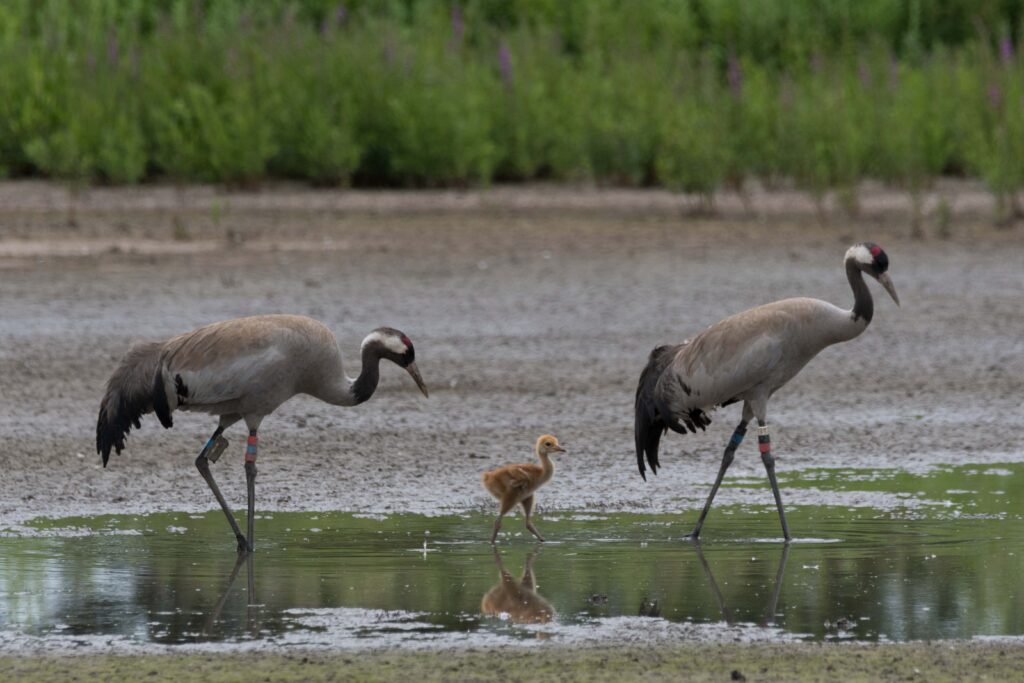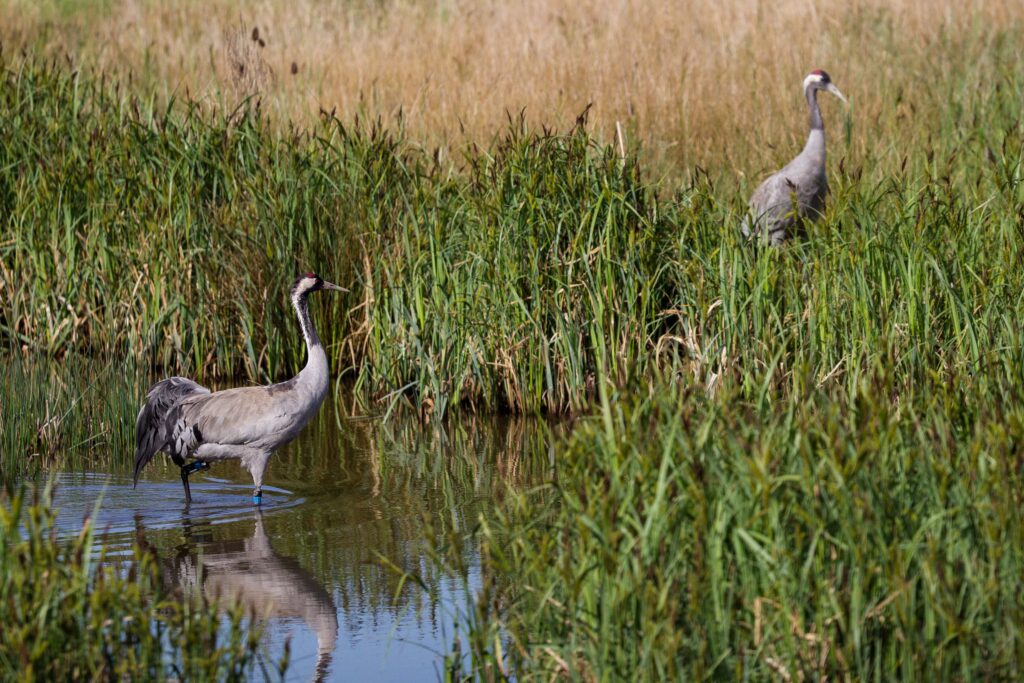In September 1465, George Neville marked his enthronement as Arch Bishop of York with a feast said to contain 4,000 mallard and teal, 1,000 partridges, 400 woodcock, 204 bittern, 200 pheasants, 100 curlew and 204 common crane. The scale of the festivity marks how common these birds once were – but less than 100 years later, Britain saw its last breeding pair of cranes. Over hunting and loss of wetland habitat drove the common crane to extinction as a native breeding bird. Today, at least 80 breeding pairs can be spotted in Britain, thanks to the exceptional work of conservationists who protected and restored their habitats. Even with the natural arrival of birds from continental Europe, the slow breeding rate of cranes meant that numbers remained small. To boost their populations, the Great Crane project, a partnership between WWT, RSPB and Pensthorpe Conservation Trust, decided to go one step further and become crane parents.
First impressions
Rearing cranes in captivity takes creativity. They are intelligent birds and can be challenging offspring to raise – particularly if you are a human. The major hurdle that the team had to overcome was imprinting. In the wild, young creatures of many different species imprint on the first thing they see – usually mum or dad. This helps the youngsters follow their parents and in the future it can help them to pair up with the correct species. Imprinting on humans could be dangerous for both bird and human so to prevent the young cranes from becoming too familiar with humans, the team dressed up as adult cranes whenever they interacted with the birds. “We dressed up in this wee willy winky kind of costume, a sack cloth, covered our faces with gorse – we looked more like beekeepers actually. The business end of the costume was initially a litter picker which we had designed to look more like a crane,” says Nigel Jarett, Conservation Breeding Manager at WWT. Through their careful disguises and props, the team were able to interact with the young cranes without ever revealing their true identities.
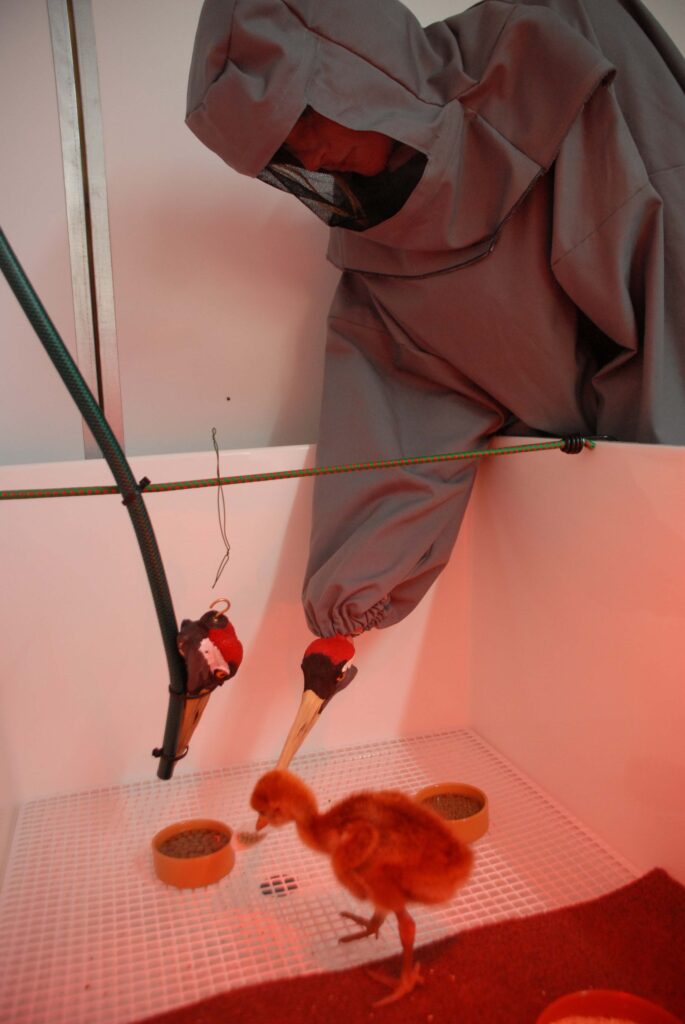
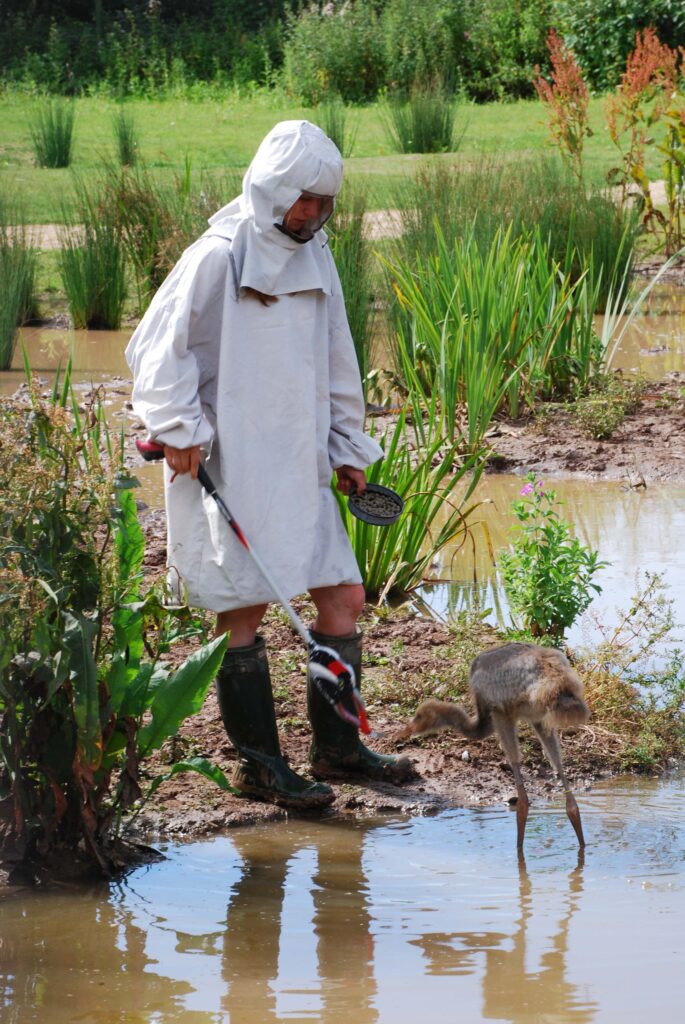
Hatching
The eggs were brought over to the UK from Germany and incubated at WWT Slimbridge Wetland Centre in the south west of England. “When you place eggs in incubators, it’s just like waiting for bread to beak[NJ1] . You don’t know what is going on inside the eggs, [NJ2] you can do everything you can in terms of providing the right conditions but you’re really in the lap of the gods[NJ3] , or rather the eggs!” says Nigel. In the later stages of development, the chick takes its first breath in the air pocket which has developed inside the egg. These precious first breaths cause a build-up of carbon dioxide which could become dangerous for the chick, but this build-up of CO2 acts as a signal to a muscle in the chick’s neck, causing it to begin twitching – stimulating the pipping process.

Once free from the egg, the young crane needs to be encouraged to start drinking, which, as Nigel says, is surprisingly hard. “What is strange about cranes is for a wetland species they are quite difficult to persuade to get started with drinking, so you’ve got to have water dripping from a dummy head into a petri dish with marbles in. They’re in there to stop the chicks falling in and getting wet and also to sparkle a bit. Once they are drinking they are off.” There is still one thing that the team needs to see to know that the chick is okay – their first poo. “It’s really quite nasty to look at but it means that everything inside is working and it makes us really happy to see,” says Nigel.
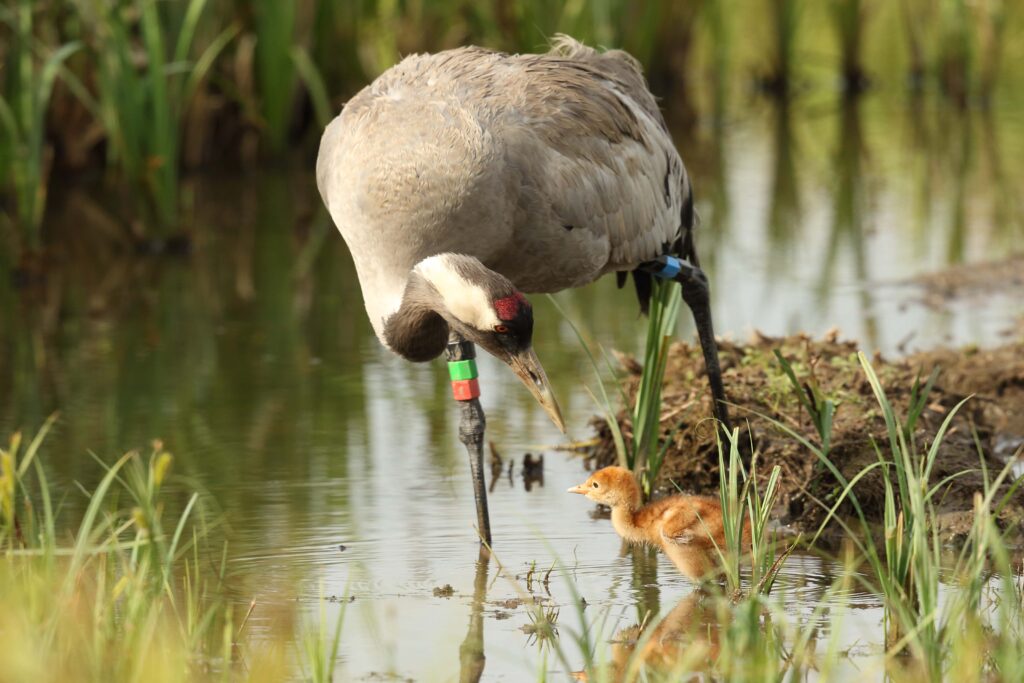
Crane School
Once the chicks are ready, it is time to start lessons with their adopted parents. Dressed in their adult crane outfits, the team would spend hours every day walking the youngsters around their enclosures. “In nature, cranes walk miles every day when they are foraging. It is really important for baby cranes to get a lot of exercise in order for their legs to grow straight and long. Birds have got growth pads at the ends of their long bones which are stimulated by footfall. So in order to get your cranes to grow nicely, you’ve got to walk them a lot,” says Nigel.
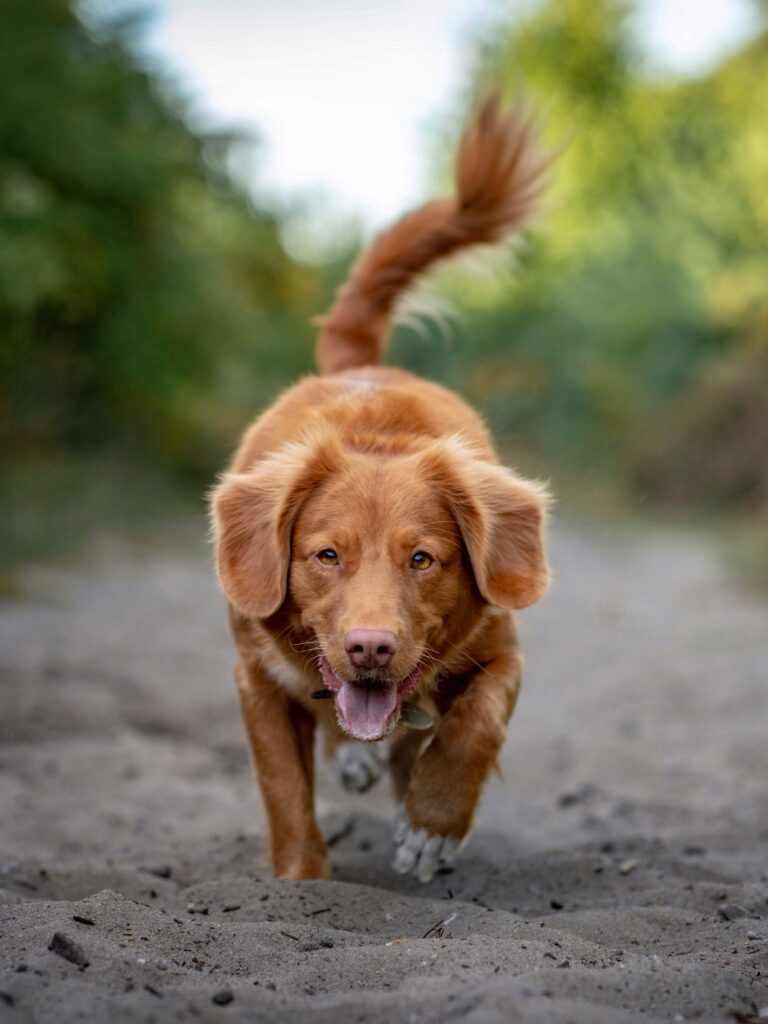
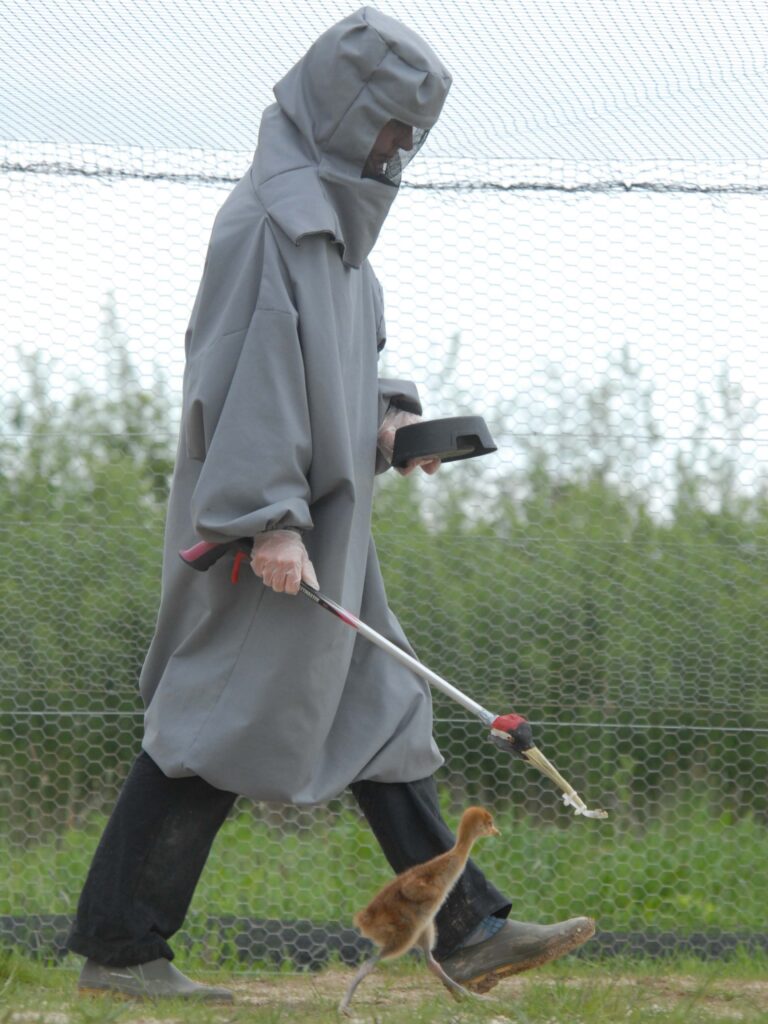
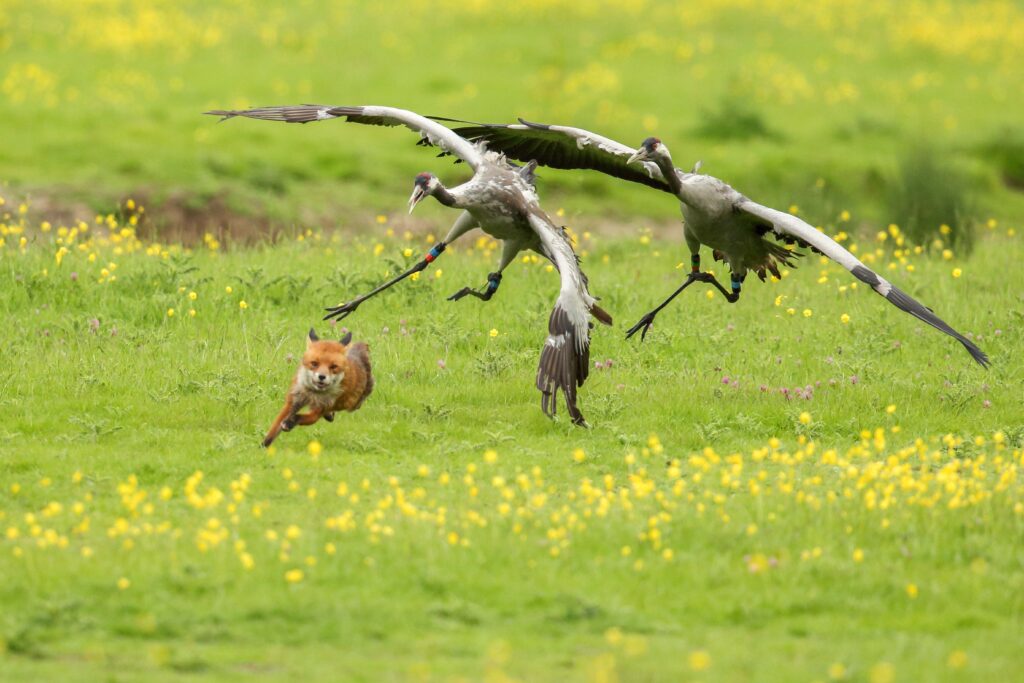
Independence
After around 10 weeks of crane school at WWT Slimbridge, the young cranes were ready to take their first steps towards adulthood. After a short trip down the road, the birds are led into a wetland enclosure where they would remain until they were ready to be released into the wild. “It was one of those stressful moments where you’re just praying that they are not going to do the wrong thing like fly into a fence, but they behaved beautifully,” says Nigel. The project set a goal of 20 breeding [NJ1] pairs by 2025 but the success has been such that they reached their target early, with 30 breeding pairs in 2023. Today, work is still ongoing to monitor their activities, protect their habitat and engage communities. Local school children have been recruited to name the cranes and Nigel still sees individuals with names like Lofty, Swampy, Pickles, Mildred, Wally, Twinkle and Pecky [NJ2] flying over WWT Slimbridge. “Its very similar to if you have grown up kids, you watch them grow up and become independent and go off and do their thing,” he says.
The Great Crane project was funded by Viridor Credits. To find out more about WWT’s work to protect wetland species and habitats, visit their website.
